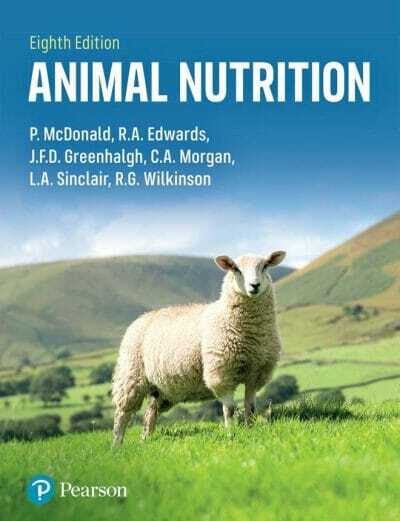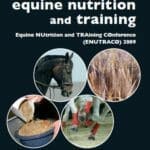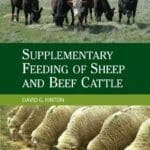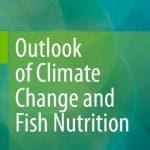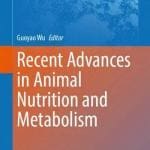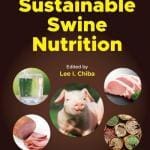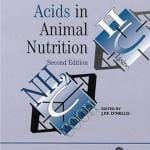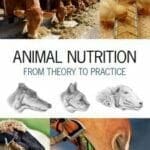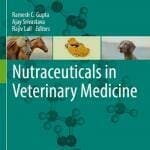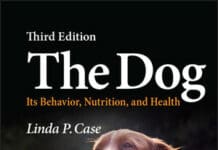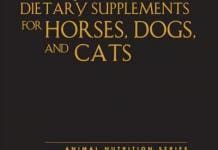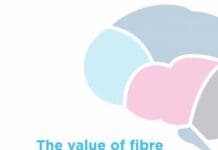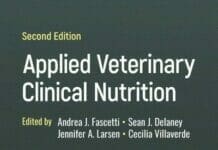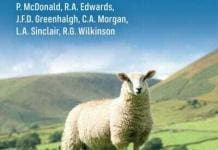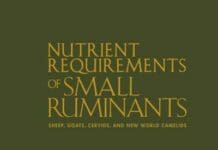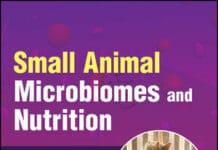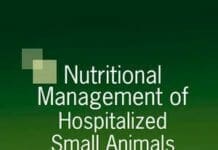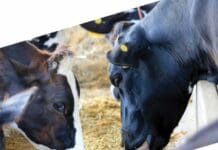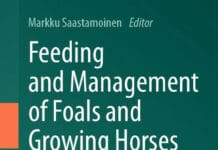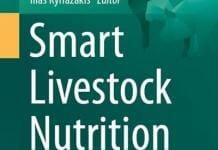Part 1
THE COMPONENTS OF FOODS
1 The animal and its food
1.1 Water
1.2 Dry matter and its components
1.3 Analysis and composition of foods
Summary
Questions
Further reading
2 Carbohydrates
2.1 Classification of carbohydrates
2.2 Monosaccharides
2.3 Monosaccharide derivatives
2.4 Oligosaccharides
2.5 Polysaccharides
2.6 Lignin
Summary
Questions
Further reading
3 Lipids
3.1 Classification of lipids
3.2 Fats
3.3 Glycolipids
3.4 Phospholipids
3.5 Waxes
3.6 Steroids
3.7 Terpenes
Summary
Questions
Further reading
4 Proteins, nucleic acids and other nitrogenous compounds
4.1 Proteins
4.2 Amino acids
4.3 Peptides
4.4 Structure of proteins
4.5 Properties of proteins
4.6 Classification of proteins
4.7 Nucleic acids
4.8 Other important nitrogenous compounds
4.9 Nitrates
4.10 Alkaloids
Summary
Questions
Further reading
5 Vitamins
5.1 Introduction
5.2 Fat-soluble vitamins
5.3 The vitamin B complex
5.4 Vitamin C
5.5 Hypervitaminosis
5.6 Vitamins and gene expression
Summary
Questions
Further reading
6 Minerals
6.1 Functions of minerals
6.2 Natural and supplementary sources of minerals
6.3 Acid–base balance
6.4 Major elements
6.5 Trace elements
6.6 Other elements
Summary
Questions
Further reading
Part 2
THE DIGESTION AND METABOLISM OF NUTRIENTS
7 Enzymes
7.1 Classification of enzymes
7.2 Nature of enzymes
7.3 Mechanism of enzyme action
7.4 Specific nature of enzymes
7.5 Factors affecting enzyme activity
7.6 Nomenclature of enzymes
Summary
Questions
Further reading
8 Digestion
8.1 Digestion in monogastric mammals and fowl
8.2 Microbial digestion in ruminants and other herbivores
8.3 Alternative sites of microbial digestion
8.4 Nutrient digestion and the environment
Summary
Questions
Further reading
Historical reference
9 Metabolism
9.1 Energy metabolism
9.2 Protein synthesis
9.3 Fat synthesis
9.4 Carbohydrate synthesis
9.5 Control of metabolism
Summary
Questions
Further reading
Part 3
QUANTIFYING THE NUTRIENT CONTENT OF FOODS: DIGESTIBILITY, ENERGY AND PROTEIN SUPPLY
10 Evaluation of feeds: digestibility
10.1 Measurement of digestibility
10.2 Validity of digestibility coefficients
10.3 Digestibility in different sections of the digestive tract
10.4 Factors affecting digestibility
10.5 Measurement of mineral availability
Summary
Questions
Further reading
11 Evaluation of foods: energy content of foods and energy partition
11.1 Energy demand
11.2 Energy supply and partition
11.3 Animal calorimetry: methods of measuring heat production and energy retention
11.4 Utilisation of metabolisable energy
Summary
Questions
Further reading
12 Evaluation of foods: systems for expressing energy supply and requirements
12.1 Energy systems and energy models
12.2 Energy systems for ruminants
12.3 Energy systems for pigs and poultry
12.4 Energy systems for horses
12.5 Energy systems for dogs and cats
12.6 Predicting the energy value of foods
Summary
Questions
Further reading
Historical references
13 Evaluation of foods: protein
13.1 Crude protein (CP)
13.2 Digestible crude protein (DCP)
13.3 Determination of endogenous nitrogen
13.4 Measures of protein quality for monogastric animals
13.5 Measures of food protein used in practice in the feeding
of pigs and poultry
13.6 Measures of food protein used in practice in the feeding
of horses
13.7 Measures of food protein quality for dogs and cats
13.8 Measures of protein quality for ruminant animals
13.9 The UK metabolisable protein system
13.10 The UK Feed into Milk (FiM) protein system for dairy cows
Summary
Questions
Further reading
Part 4
THE NUTRIENT REQUIREMENTS OF ANIMALS
14 Feeding standards for maintenance and growth
14.1 Nutrient requirements for maintenance
14.2 Nutrient requirements for growth
14.3 Nutrient requirements for wool production
14.4 Mineral and vitamin requirements for maintenance and growth
14.5 Nutritional control of growth
Summary
Questions
Further reading
Historical reference
15 Feeding standards for reproduction
15.1 Nutrition and the initiation of reproductive ability
15.2 Plane of nutrition, fertility and fecundity
15.3 Egg production in poultry
15.4 Nutrition and the growth of the foetus
Summary
Questions
Further reading
16 Lactation
16.1 Sources of the milk constituents
16.2 Nutrient requirements of the lactating dairy cow
16.3 Nutrient requirements of the lactating ewe
16.4 Nutrient requirements of the lactating dairy goat
16.5 Nutrient requirements of the lactating sow
16.6 Nutrient requirements of the lactating mare
16.7 Nutrient requirements of the lactating dog and cat
Summary
Questions
Further reading
17 Voluntary intake of food
17.1 Food intake in pigs and poultry
17.2 Food intake in ruminants
17.3 Food intake in horses
17.4 Food intake in dogs and cats
17.5 Prediction of food intake
Summary
Questions
Further reading
Part 5
THE NUTRITIONAL CHARACTERISTICS OF FOODS
18 Grass and forage crops
18.1 Pastures and grazing animals
18.2 Grasses
18.3 Legumes
18.4 Other forages
Summary
Questions
Further reading
19 Silage
19.1 Silage, ensilage and silos
19.2 Role of plant enzymes in ensilage
19.3 Role of microorganisms in ensilage
19.4 Nutrient losses in ensilage
19.5 Classification of silages
19.6 Nutritive value of silages
19.7 Whole crop cereal and legume silages
Summary
Questions
Further reading
20 Hay, artificially dried forages, straws and chaff
20.1 Hay
20.2 Artificially dried forages
20.3 Straws and related by-products
Summary
Questions
Further reading
21 Roots, tubers and related by-products
21.1 Roots
21.2 Tubers
Summary
Questions
Further reading
22 Cereal grains and cereal by-products
22.1 The nutrient composition of grains
22.2 Barley
22.3 Maize
22.4 Oats
22.5 Wheat
22.6 Other cereals
22.7 Cereal processing
Summary
Questions
Further reading
23 Protein concentrates
23.1 Oilseed cakes and meals
23.2 Oilseed residues of minor importance
23.3 Leguminous seeds
23.4 Processed animal protein (PAP)
23.5 Milk products
23.6 Single-cell protein and microalgae
23.7 Insect protein
23.8 Synthetic amino acids
23.9 Non-protein nitrogen compounds as protein sources
Summary
Questions
Further reading
24 Food additives
24.1 Antibiotics
24.2 Probiotics
24.3 Oligosaccharides
24.4 Enzymes
24.5 Organic acids
24.6 Spray-dried plasma
24.7 Modifiers of rumen fermentation
24.8 Plant extracts
Summary
Questions
Further reading
Part 6
ANIMAL PRODUCTS AND HUMAN NUTRITION
25 Animal nutrition and the consumers of animal products
25.1 Comparative nutrition
25.2 The contribution of animal products to human requirements
25.3 Objections to the use of animal products
25.4 Animal products: past, present and future
Summary
Questions
Further reading
Appendix 1: Solutions to numerical questions
Appendix 2: Notes on tables
Index
